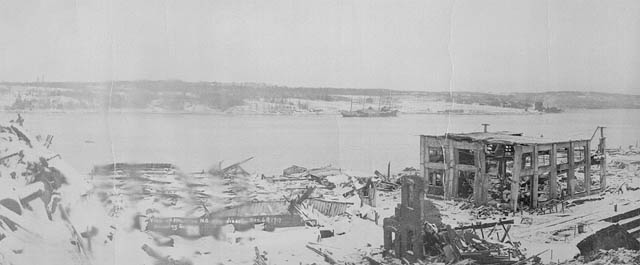Canada’s first purpose-built warship, the Canadian Government Ship (CGS) Canada, was launched in 1904, several years before the Naval Service of Canada was established in 1910. However, it was not the first ship commissioned into the navy (see HMCS Niobe and HMCS Rainbow). Canada was delivered to the Fisheries Protection Service before the Canadian navy existed. But from the time it was ordered, it was intended for a military function. Canada was commissioned into the Royal Canadian Navy in 1915 and served as an antisubmarine patrol vessel during the First World War. The ship was retired in 1920 and sank in 1926 in the Florida Keys. Its wreck is a designated element of the US Florida Keys National Marine Sanctuary.

CGS/HMCS Canada Specifications
|
|
As Built (1904) CGS
|
As Refit (1915) HMCS
|
|
Displacement
|
418 tonnes
|
566 tonnes
|
|
Length
|
61 metres
|
63 metres
|
|
Beam
|
7.6 metres
|
7.6 metres
|
|
Draught
|
3.2 metres
|
4 metres
|
|
Maximum Speed
|
22 knots
|
14 knots
|
|
Crew
|
75
|
60
|
|
Armament
|
4 x 3-pounder guns
|
2 x 12-pounder guns
|

CGS Canada
At the 1902 Colonial Conference in London, England, Sir Wilfrid Laurier committed his Liberal government to gradually transform the existing Fisheries Protection Service (FPS) into a naval force. Canada was the first physical manifestation of that policy. The ship was built by the Vickers, Sons & Maxim shipyard at Barrow-in-Furness, England, and was launched in June 1904. At 63 m long and 566 tonnes, of steel construction with a ram bow, the ship was fitted with one of the newly developed Marconi wireless devices and armed with four 3-pounder quick-firing guns. Canada drew her lineage from the successful series of Rattlesnake-class torpedo-gunboats built by the Vickers yard in the 1880s and still in service with the Royal Navy at the time.
On arrival in Quebec City on 29 September 1904, the ship was described as “the nucleus of the proposed Canadian naval militia;” soon after, in February 1905, Canada sailed to Bermuda to participate in winter fleet manoeuvres with the British North America and West Indies Squadron. These initiatives culminated with the embarkation of the first cadre of six naval cadets in the summer of 1909, including Victor-Gabriel Brodeur and Percy Nelles. Brodeur was son of the Minister of Marine & Fisheries and later became the first French Canadian to reach flag rank; Nelles would become the first Canadian-trained Chief of the Naval Staff (1934–44).
A year later, the Naval Service of Canada was established (see Naval Service Act) and the much larger cruiser HMCS Niobe was acquired; in November 1910, the cadets and other trainees were transferred to Niobe. As the navy and the FPS were part of the same ministry, Canada occasionally participated in joint naval and military exercises for the defence of Halifax harbour in the years leading up to the First World War.

HMCS Canada and First World War
On the outbreak of war in August 1914, Canada was formally transferred to the Royal Canadian Navy. A major refit transformed her into a true minor warship, visibly changing her profile with a raised fo’c’sle and increasing the armament to two 12-pounder guns in addition to retaining two of the four 3-pounders. Commissioned as HMCS Canada on 25 January 1915, the ship served out the war as an antisubmarine patrol vessel. It frequently provided an escort to high-value shipping in the Gulf of St Lawrence and off the eastern seaboard. Canada was paid off in November 1919, resumed its former fisheries patrol duties before being retired from Government service in 1920 and put up for commercial disposal.
Did you know?
HMCS Canada was anchored at HMC Dockyard in Halifax during the massive explosion of 6 December 1917. The ship suffered minor damage and a crewman was seriously injured. Other crew members went ashore to assist in rescue and recovery operations. (See Halifax Explosion.)
Legacy
After being laid up in Halifax for four years, Canada was sold to the Florida Inter-Island Steamship Company in 1924 and renamed the Queen of Nassau. The ship was enroute from Miami to Tampa on 2 July 1926 when it foundered under mysterious circumstances off Islamorada in the Florida Keys. The wreck was located in 2001, resting in 70m of water. The site has been designated as an element of the US Florida Keys National Marine Sanctuary because of its remarkably good condition and the significance it holds in the development of Canada’s military.

 Share on Facebook
Share on Facebook Share on X
Share on X Share by Email
Share by Email Share on Google Classroom
Share on Google Classroom











